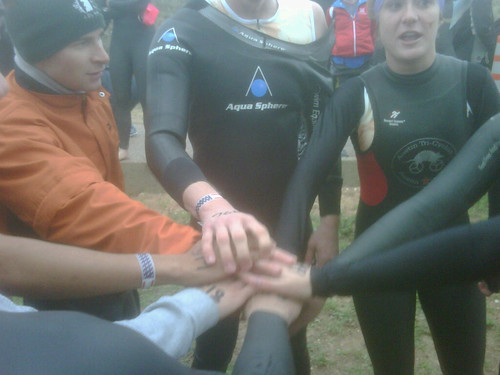 Today’s Rhubarb Report really isn’t about rhubarb. Come to think of it, it really is about rhubarb, the kind you would consume on a day like today – Thanksgiving.
Today’s Rhubarb Report really isn’t about rhubarb. Come to think of it, it really is about rhubarb, the kind you would consume on a day like today – Thanksgiving.
Thanksgiving in Canada is actually Columbus Day in the United States. Many things remain the same: turkey dinner, time with friends and family, and pumpkin pie. Don’t forget the football games.
Back in my youth, we would often spend Thanksgiving with my father’s parents. My grandmother would always create a huge meal. Fresh vegetables would come from her own garden. Dinner was always tremendous, but dessert was second to none.
Of course, when in the United States, do as your fellow Americans do, and that means celebrate Thanksgiving in November. And as I would always say, if it means an extra turkey dinner, celebrate it on Canadian Thanksgiving as well.
Seriously though, this day is about so much more than just turkey and football. It is about giving thanks. So let’s throw away the standard format for the Report, and get down to what is really important on a day like today.
 Athletes are always looking to optimize their training. Student athletes are no different. But the demands on the student athlete may be very different above and beyond the actual imposed training demands.
Athletes are always looking to optimize their training. Student athletes are no different. But the demands on the student athlete may be very different above and beyond the actual imposed training demands.
One thing that serves as a positive: student athletes tend to be highly motivated to train. They will train, and they will train hard. And let’s face it – students are already in an environment which requires a high level of motivation to succeed academically.
Intense academic coursework places a high demand on the central nervous system. Students can be stressed by those demands, and may not have good strategies to alleviate the stressors functionally. If they are active, they may use training sessions as a means of stress relief.
Recovery-Centered Training proposes that training is only as good as the athlete’s ability to recover from and adapt to the training session(s). This is where the student athlete can run into difficulties.
 Kansas State University has our number these days. The Longhorns have lost to the Wildcats four straight times now after this past weekend’s 17 – 13 thriller. Coach Bill Snyder should be getting a Coach Of The Year award with his AARP benefits program and Family Stadium named after him. Collin Klein has moments when he looks like Tim Tebow revisited, without the fanaticism and Heisman.
Kansas State University has our number these days. The Longhorns have lost to the Wildcats four straight times now after this past weekend’s 17 – 13 thriller. Coach Bill Snyder should be getting a Coach Of The Year award with his AARP benefits program and Family Stadium named after him. Collin Klein has moments when he looks like Tim Tebow revisited, without the fanaticism and Heisman.
Oh, wait. This post isn’t about the Wildcats – it is about the Longhorns. Unfortunately, the news hasn’t changed much around the Forty Acres over the past few weeks. But there are some very intriguing plot lines developing.
If your defense holds a team to 17 points, especially if that team is #16 in the country, then you have done your job. Two weeks in a row now, that has happened. The Longhorns defense has been dominant.
The Longhorns offense, on the other hand, is in neutral.
 There have been a lot of crazy options floated in the health care world about ways to decrease costs, increase treatment adherence, and the like. There have also been a lot of crazy paranoid ideas put forth, including the legendary “comparative effectiveness equals death panels” diatribe.
There have been a lot of crazy options floated in the health care world about ways to decrease costs, increase treatment adherence, and the like. There have also been a lot of crazy paranoid ideas put forth, including the legendary “comparative effectiveness equals death panels” diatribe.
Meanwhile, the incidence of chronic conditions continues to climb – and with that, the cost of maintaining our current system.
There are many issues in the current health care system that are driven by factors unrelated to the care of the patients themselves. That is truly a sad state of affairs, but the reality that we must face.
But with that said, there is a question that swirls around this: is the health care system itself fully to blame? Or is there a cultural issue that is inherent to our health care woes?
 Everybody seems to have the best interests of the patient at the heart of the health care reform discussion. Or so the story goes. That would be a wonderful, benevolent, valiant effort, wouldn’t it?
Everybody seems to have the best interests of the patient at the heart of the health care reform discussion. Or so the story goes. That would be a wonderful, benevolent, valiant effort, wouldn’t it?
Countless examples abound these days. The pharmaceutical industry wants to make sure they advertise their products directly with patients. It makes it easier for the patient to go to the doctor and ask for the correct medicine, right?
Physician associations want to make sure that tort reform and medical liability reform are established nationally. It will ultimately save dollars and increase access to care, right?
Physicians want to be able to own their own imaging and laboratory facilities so that they can provide more convenient services to the patient. They might even call it “one stop health care”. Convenience is a good thing, right?
Even the Supreme Court wants to protect patients from the “unconstitutionality” of health care reform.
But the road to health care is paved with good intentions – and a lot of money.
 Ask any auto racer or motorcycle racer and they will tell you that to be fast, you have to be on the edge. Racing fast is all about being on that fine razor’s edge of adhesion, or power, or control.
Ask any auto racer or motorcycle racer and they will tell you that to be fast, you have to be on the edge. Racing fast is all about being on that fine razor’s edge of adhesion, or power, or control.
Pushing 200 mph is no place for irresponsibility or silliness. Forget that – pushing 150 mph is no place for it. It doesn’t matter if the car is open wheeled or not, though the ramifications of two (or more) open wheeled cars coming together can create some serious drama quickly. Just reflect on the sad events that took place in Las Vegas recently when Dan Wheldon was killed in a horrific multi-car accident.
Racers will tell you that accidents are a part of their sport. Every racer will tell you that. The teams and series organizers do what they can to remove as much danger as possible and to keep the drivers out of harm’s way.
But racing fast also requires some level of responsibility, to yourself and to your fellow drivers. Which brings me to the saga of Kyle Busch.
 It seems like there is a stigma attached to running fast.
It seems like there is a stigma attached to running fast.
In the world of running as we know it today, there is a huge trend towards running a marathon. It might even be your first running event, and for many, their last. The number of marathon participants in this country has skyrocketed. This became even more readily apparent this past weekend when I attended the San Antonio Marathon as a spectator. Marathon training is now a social phenomenon.
In the meantime, the average marathon time is at least 30 minutes slower now than a decade ago. The average time for men is now 4:32; for women, 5:06. Injury rates reported in the literature vary from 60 to 90% of all marathon runners. So now the end result is that we have a lot of people running marathons, slowly, getting injured in the process, and perhaps not even running again.
Running longer slower has become the motto of the running community. Whatever happened to running fast? Perhaps it disappeared with the demise of the track club.
 "Running Injuries: Etiology And Recovery- Based Treatment" (co-author Bridget Clark, PT) appears in the third edition and fourth editions of "Clinical Orthopaedic Rehabilitation: A Team Approach" by Charles Giangarra, MD and Robert C. Manske, PT.
"Running Injuries: Etiology And Recovery- Based Treatment" (co-author Bridget Clark, PT) appears in the third edition and fourth editions of "Clinical Orthopaedic Rehabilitation: A Team Approach" by Charles Giangarra, MD and Robert C. Manske, PT.
 Allan Besselink, PT, DPT, Ph.D., Dip.MDT has a unique voice in the world of sports, education, and health care. Read more about Allan here.
Allan Besselink, PT, DPT, Ph.D., Dip.MDT has a unique voice in the world of sports, education, and health care. Read more about Allan here.
 Top 5 finalist in three categories: "Best Overall Blog", "Best PT Blog" and "Best Advocacy Blog".
Top 5 finalist in three categories: "Best Overall Blog", "Best PT Blog" and "Best Advocacy Blog".